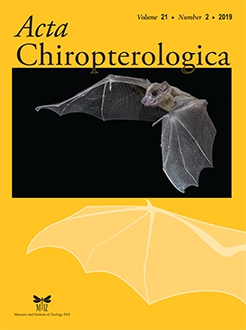Climate change presents a serious threat to global biodiversity. In the extreme north of Europe, for example, some boreal bat species have been predicted to become extinct by the end of the century. We have used bat activity data derived from car-based surveys across Ireland to examine the effects of weather and climate using an approach that teases apart their spatial and temporal effects. This allows more accurate modelling of the impacts of weather than has heretofore been possible. Our results also support previous work that suggests the standard approach for combining the spatio-temporal variation in weather covariates is unsound. We used the results of this modelling exercise to forecast the effects of predicted climate change on three widespread Irish species for the years 2046–2059. Nyctalus leisleri, in its international stronghold, is predicted to undergo a decline in the north-west with increases likely in the south-east. Pipistrellus pipistrellus is predicted to undergo similar changes to N. leisleri, with declines in the north. Pipistrellus pygmaeus may increase in coastal locations. Predicted declines in the north of Ireland run somewhat contrary to expectations since increased ambient temperature there may have been anticipated to favour bat population growth. This work is a promising step towards disentangling the spatial and temporal impacts of weather and, from there, assessing the effects of climate change on bats in Europe. Pipistrelle species, in particular, are likely to be north-western Europe's most abundant consumers of aerial nocturnal insects and future conservation plans must consider potential losses of these species from agricultural areas and how any resulting reduction in ecosystem services can be mitigated.
How to translate text using browser tools
2 March 2020
Elucidating the Consequences of a Warming Climate for Common Bat Species in North-Western Europe
Niamh Roche,
Steve Langton,
Tina Aughney,
Deirdre Lynn,
Ferdia Marnell
ACCESS THE FULL ARTICLE

Acta Chiropterologica
Vol. 21 • No. 2
December 2019
Vol. 21 • No. 2
December 2019
bat population
Chiroptera
climate change model
conservation
Spatio-temporal variability
weather




